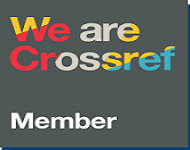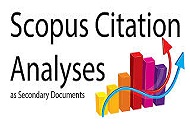Development of a RADEC-Based E-LKPD Using Liveworkaheets for Thermochemistry Learning
DOI:
https://doi.org/10.33394/jp.v12i4.17957Keywords:
E-LKPD, RADEC, Thermochemistry, Liveworksheets, Interactive LearningAbstract
This study aims to develop an Electronic Student Worksheet (E-LKPD) based on the RADEC (Read, Answer, Discuss, Explain, Create) learning model using the Liveworksheets platform to enhance learning quality and student engagement. The study employed the 4-D development model (Define, Design, Develop, Disseminate), limited to the development stage. The research instruments consisted of expert validation sheets and user response questionnaires. Data were analyzed using descriptive quantitative and qualitative techniques. Quantitative data were obtained from expert validation questionnaires and teacher and student response questionnaires, while qualitative data were derived from observations and open-ended responses, analyzed through data reduction, data display, and conclusion drawing. The validation results from two material experts indicated that the E-LKPD achieved validation scores ranging from 91.6% to 95.8%, categorized as “Valid.” Meanwhile, media validation by one media expert resulted in a score of 100%, also categorized as “Valid.” Trials involving teachers yielded a response score of 90.63%, and trials involving students obtained 92.32%, both classified as “Very Good.” Therefore, the RADEC-based E-LKPD was declared valid and received highly positive responses, indicating its potential for use in teaching thermochemistry to Grade XI SMA/MA students.
References
Aulya, R. A., Asyhar, R., & Yusnaidar, Y. (2021). Pengembangan E-Modul Kimia Berbasis PjBL-STEM untuk Pembelajaran Daring Siswa SMA pada Materi Larutan Penyangga. Journal of The Indonesian Society of Integrated Chemistry, 13(2), 84–91. https://doi.org/10.22437/jisic.v13i2.14506
Chang, R. (2005). Kimia Dasar Konsep-Konsep Inti Edisi Ketiga Jilid 1. Erlangga. Jakarta.
Fikrina, Q. A., Sumarni, W., & Sumarti, S. (2023). Chemistry in Education Pengembangan E- Modul Kimia Larutan Terintegrasi Etno-STEAM Bahan Kajian Batik Pekalongan. Chemistry in Education, 12(1), 17–24.
Hastuti, S., Ahlun Ansar, ), & Hermawan, N. (2025). Penerapan Teknologi Deep Learning Dalam Pendidikan Digital. Jurnal Penelitian Ilmu Pendidikan Indonesia, 4(2), 359–365. https://jpion.org/index.php/jpi359Situswebjurnal:https://jpion.org/index.php/jpi
Lastri, Y. (2023). Pengembangan Dan Pemanfaatan Bahan Ajar E-Modul Dalam Proses Pembelajaran. Jurnal Citra https://doi.org/10.38048/jcp.v3i3.1914
Mardiansari, S., Sopandi, W., & Kadarohman, A. (2022). Penguasaan Multipel Representasi Peserta Didik Pada Materi Larutan Penyangga Melalui Pembelajaran Radec. Jurnal Riset Dan Praktik Pendidikan Kimia, 10(2), 120–132. https://doi.org/10.17509/jrppk.v10i2.52237
Mulyatiningsih, E. (2015). Metode penelitian terapan bidang pendidikan. UNY Press.
Pendidikan, J. W., Falasifah, F., Yadi, N., Halimah, L., Indonesia, P., & Cibiru, K. (2025). Strategi Peningkatan Kompetensi Guru Di Era Digital Untuk Sekolah Dasar 1. 12(1), 229–240.
Rara, J. B., & Waworuntu, F. (2023). Efektivitas Model Pembelajaran Read-Answer-Discuss-Explain and Create (RADEC) Terhadap Hasil Belajar Pada Materi Laju Reaksi di SMA Negeri 1 Kakas. Oxygenius Journal Of Chemistry Education, 5(1), 7–11. https://doi.org/10.37033/ojce.v4i2.521
Resi Safira. (2023). Dampak Kemajuan Teknologi Pada Pendidikan Bahasa Indonesia. Student Scientific Creativity Journal, 1(3), 54–62. https://doi.org/10.55606/sscj-amik.v1i3.1329
Safitri. (2022). Pengembangan media bahan ajar E-Lkpd interaktif menggunakan website wizer.me pada pembelajaran Ips materi berbagai pekerjaan tema 4 kelas IV SDN tanah kalikedinding II. Mitra Mahajana: Jurnal Pengabdian Masyarakat, 4(1), 22–29.
Seruni, R., Munawaoh, S., Kurniadewi, F., & Nurjayadi, M. (2019). Pengembangan Modul Elektronik (E-Module) Biokimia Pada Materi Metabolisme Lipid Menggunakan Flip Pdf Professional. JTK (Jurnal https://doi.org/10.15575/jtk.v4i1.4672
Silvanny, & Yerimadesi. (2023). Pengembangan E-Modul Kimia Berbasis PjBL-STEM pada Materi Reaksi Kimia untuk Fase E SMA. Jurnal Pendidikan Tambusai, 7(2), 11720–11730.
Sugiyono. (2019). Metode Penelitian dan Pengembangan (Research and Development/R&D). Bandung: Alfabeta.
Trianto. (2012). Mendesain model pembelajaran inovatif-progresif: Konsep, landasan, dan implementasinya pada Kurikulum Tingkat Satuan Pendidikan (KTSP). Jakarta: Kencana.
Wibowo, T., & Ariyatun, A. (2020). Kemampuan Literasi Sains Pada Siswa Sma Menggunakan Pembelajaran Kimia Berbasis Etnosains. Edusains, 12(2), 214–222. https://doi.org/10.15408/es.v12i2.16382
Widyarti, O., & Chrysti Suryandari, K. (2024). Kalam Cendekia: Jurnal Ilmiah Kependidikan. Penerapan Model RADEC untuk Meningkat Kemampuan Berpikir Kreatif Siswa Sekolah Dasar dalam Pembelajaran IPA. 12, 1–10.
Downloads
Published
How to Cite
Issue
Section
Citation Check
License
Copyright (c) 2025 The Author(s)

This work is licensed under a Creative Commons Attribution-ShareAlike 4.0 International License.
License and Publishing Agreement
In submitting the manuscript to the journal, the authors certify that:
- They are authorized by their co-authors to enter into these arrangements.
- The work described has not been formally published before, except in the form of an abstract or as part of a published lecture, review, thesis, or overlay journal.
- That it is not under consideration for publication elsewhere,
- That its publication has been approved by all the author(s) and by the responsible authorities tacitly or explicitly of the institutes where the work has been carried out.
- They secure the right to reproduce any material that has already been published or copyrighted elsewhere.
- They agree to the following license and publishing agreement.
Copyright
Authors who publish with Jurnal Paedagogy agree to the following terms:
- Authors retain copyright and grant the journal right of first publication with the work simultaneously licensed under a Creative Commons Attribution License (CC BY-SA 4.0) that allows others to share the work with an acknowledgment of the work's authorship and initial publication in this journal.
- Authors are able to enter into separate, additional contractual arrangements for the non-exclusive distribution of the journal's published version of the work (e.g., post it to an institutional repository or publish it in a book), with an acknowledgment of its initial publication in this journal.
- Authors are permitted and encouraged to post their work online (e.g., in institutional repositories or on their website) prior to and during the submission process, as it can lead to productive exchanges, as well as earlier and greater citation of published work.
Licensing for Data Publication
-
Open Data Commons Attribution License, http://www.opendatacommons.org/licenses/by/1.0/ (default)






